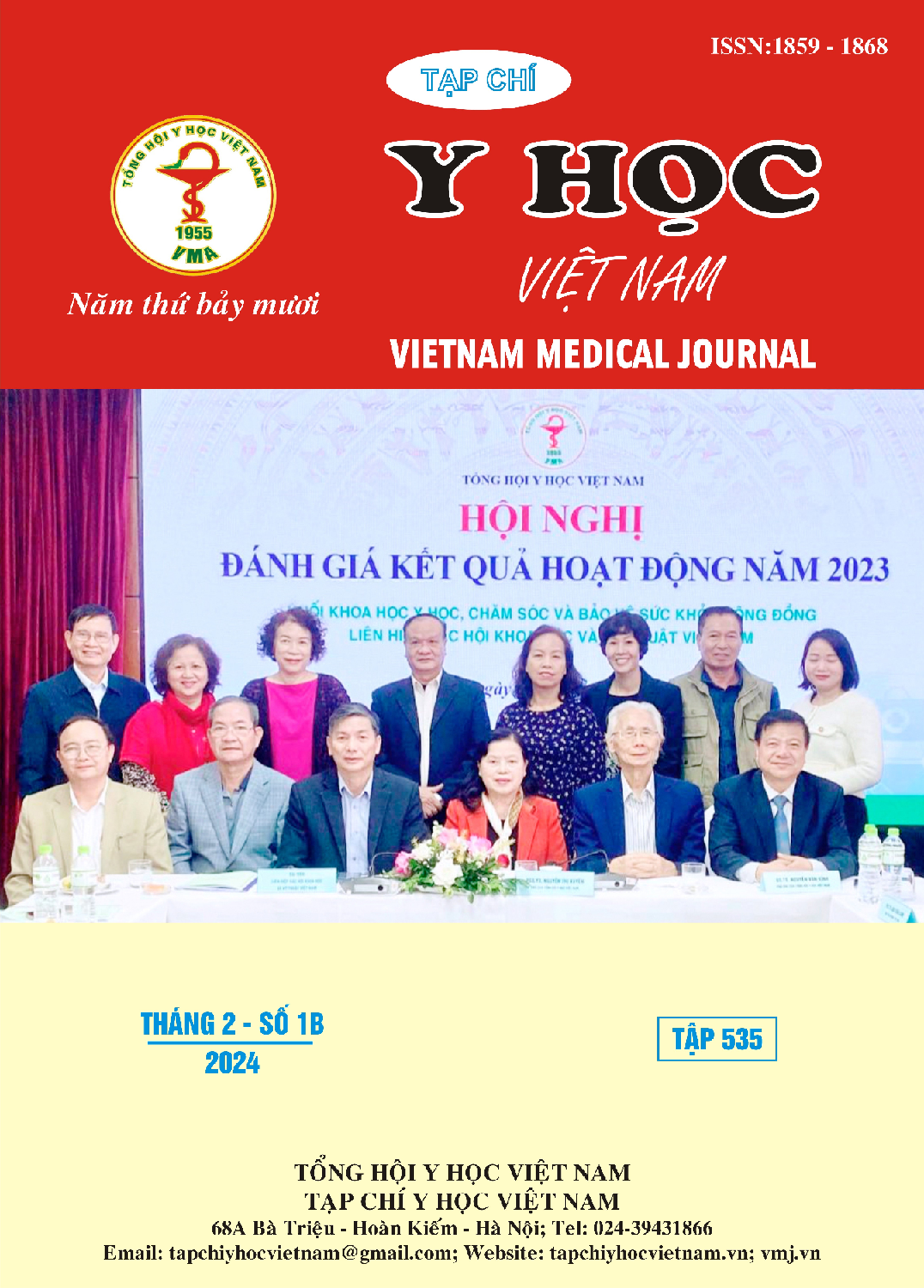SOME FACTORS RELATED TO THE RESULTS OF TREATMENT OF SEVERE ACUTE RESPIRATORY INFECTION RESPIRATORY SYMPTOM VIRUS INFECTION AT THE INTENSIVE CARE UNIT AND ANTI-POISONING DEPARTMENT OF NGHE AN OBSTETRICS AND PEDIATRICS HOSPITAL
Main Article Content
Abstract
Objective: Some factors related to the results of treatment of severe acute respiratory infections infected with respiratory syncytial virus (RSV) at the Intensive Care - Poison Control Department, Nghe An Obstetrics and Pediatrics Hospital. Subjects and research methods: 78 patients diagnosed with severe acute respiratory syndrome coronavirus infection treated at the Intensive Care Unit and Anti-Poisoning Department of Nghe An Obstetrics and Pediatrics Hospital. Results: The age group under 6 months accounts for 84.6% and is more common in males than in females. Severe respiratory infections account for 73.1% and very severe cases account for 26.9%. Regarding treatment results, the patient death rate is 6.4%. The group of patients with multiple organ failure had an 35,43 times higher risk of death than the group without multiple organ failure (95% CI: 3,46-362,86; p =0,001). The group of patients with signs of shock had a 42 times higher risk of death than the group without signs of shock (95% CI: 4,02-438,57; p = 0,001). The group of patients with prothrombin concentration < 70% had a 65 times higher risk of death (95% CI: 5,82-725,69; p = 0,00). The group of patients with albumin concentration ≤ 30 g/l had an 88 times higher risk of death (95% CI: 7.38-1048; p = 0.00). Patients with blood lactate concentration > 2.5 mmol/l have an 20,4 times higher risk of death (2,06 - 202,21; p = 0,006). Conclusion: Factors related to the risk of death in patients with severe ARI and RSV infection are: multiple organ failure, shock, blood lactate concentration > 2.5mmol/l, albumin < 30 g/l and prothrombin < 70%.
Article Details
Keywords
related factors, treatment results, severe acute respiratory infections, respiratory syncytial virus infection.
References
2. Harish N et al (2013). Global and regional burden of hospital admissions for severe acute lower respiratory infections in young children in 2010: a systematic analysis.Lancet, 381(9875): 1380-1390.
3. Assies R, Snik I, Kumwenda M, et al (2022). Etiology, Pathophysiology and Mortality of Shock in Children in Low (Middle) Income Countries: A Systematic Review. J Trop Pediatr; 68(4):fmac053.
4. Nguyễn Tuấn Anh, Phạm Văn Thắng (2021). Dịch tễ lâm sàng nhiễm khuẩn hô hấp cấp nặng do virus hợp bào hô hấp tại khoa Điều trị tích cực Bệnh viện Nhi trung ương. Tạp chí Nhi khoa, 14(3): 35-41.
5. Ogunbayo AE, Mogotsi MT, Sondlane H, et al (2022). Pathogen Profile of Children Hospitalised with Severe Acute Respiratory Infections during COVID-19 Pandemic in the Free State Province, South Africa. Int J Environ Res Public Health, 19(16):10418.
6. Fitzner J, Qasmieh S, Mounts AW, et al (2018). Revision of clinical case definitions: influenza-like illness and severe acute respiratory infection. Bull World Health Organ; 96(2):122-128.
7. El Kholy AA, Mostafa NA, El-Sherbini SA, et al (2013). Morbidity and outcome of severe respiratory syncytial virus infection. Pediatr Int Off J Jpn Pediatr Soc; 55(3):283-288.
8. Kang J, Lee J, Kim Y, et al (2019). Pediatric intensive care unit admission due to respiratory syncytial virus: Retrospective multicenter study. Pediatr Int; 61(7):688-696.
9. Lee MW, Goh AE (2021). Mortality in children hospitalised with respiratory syncytial virus infection in Singapore. Singapore Med J., 62(12):642-646.


